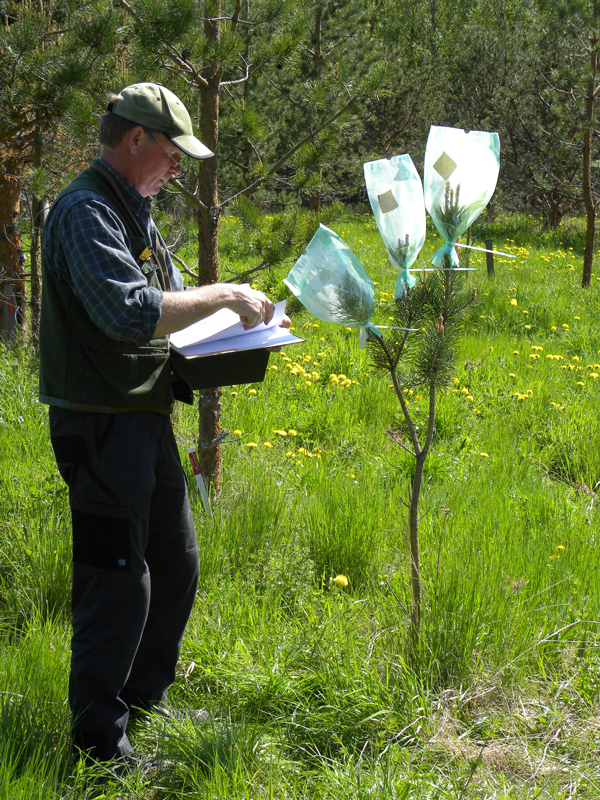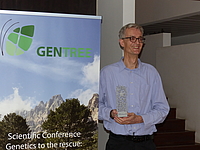
Tree breeding has three related goals that are sometimes in conflict; to improve economic traits, to improve adaptability to environmental conditions and to maintain genetic diversity for future adaptability and improvement.
In practical terms, trees need a lot of land and it takes a lot of time to raise offspring and assess their characteristics. Tree breeding is also more complicated than breeding animals or crop plants because generally existing populations are genetically very diverse.
An early approach was the provenance trial, where the natural offspring of tree populations from different places are grown in a single location, to see which of the populations produces the offspring that perform best. The selected population can then be used as a source of seed.
While provenance trials remain valuable, more recently tree breeders have been developing deliberate crossing programmes. These need to include a wide range of parents, to maintain diversity for the future, while at the same time selecting better-performing individuals as parents for future generations or to multiply clonally.
The challenges are considerable but now, thanks to software developed by Skogforsk, the Forestry Research Institute of Sweden, as part of the GenTree project, breeders have access to new tools that should make their lives a lot easier.
The software packages tackle two related questions: OPSEL helps to select the parents for a breeding programme, while XDesign optimises the actual design of mating strategies among selected parents. Both packages are incorporated in POPSIM, a simulation tool that allows breeders to evaluate the consequences of their activity over several generations of selection, mating and testing.
Tim Mullin, the Skogforsk researcher who led the development of the packages, says that the software is “already in use to optimize selection and breeding in Sweden, to maximize gain while conserving genetic diversity”.
That is a clue to the difficulty of tree breeding. In coming up with any breeding strategy, researchers need to balance several important considerations. They want the most productive offspring, but they also need to maintain genetic diversity, to protect against the dangers that can face uniform populations and to ensure that the offspring can respond well to changing conditions. Breeders have developed mathematical tools to help, but even with fast computers these models need a long time to choose the optimum set of parents from a very large number of potential candidates.
Mullin, along with colleagues at the Tokyo Institute of Technology in Japan, came up with a new, more efficient approach to the problem of optimum selection. The new method reduced the computation time from almost 11 hours to less than 2 seconds. This new, much faster solution allows breeders to quickly revise selection decisions, which in practice they often have to do. It also allows the simulation tool POPSIM to consider many more options.
Mullin and his colleagues have already put the approach to work to bring together a fresh breeding population for Scots pine (Pinus sylvestris) in northern Sweden, based on three existing sub-populations. The model showed that selecting across all previous cycles – founders and progeny of founders – consistently produced the best result.
Having run the model, field workers were sent out to identify the parent trees selected by the software. If a tree proved to be dead or otherwise inappropriate, the field worker informed the Skogforsk breeder, who ran the model again to identify a new candidate. The speed of the new algorithms allowed field workers to receive the updated selections within an hour, ensuring that the breeding strategy stayed on track. Work is now under way to implement the specific crosses suggested by the software, in order to launch the next breeding cycle.
This article is based on:
Yamashita, M., Mullin, T.J. & Safarina, S. An efficient second-order cone programming approach for optimal selection in tree breeding Optim Lett (2018).
Mullin, T.J. & Persson, T. 2018. Assembling optimum breeding populations for the Swedish Scots pine breeding program. Arbetsrapport från Skogforsk Nr. 965-2018, Skogforsk, Uppsala, SE (2018).

